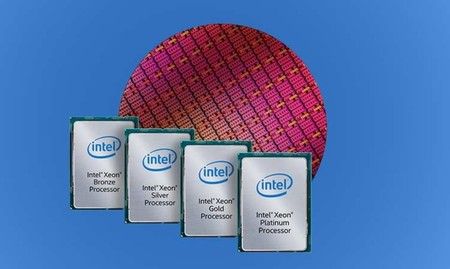Intel continues to work on its processors without external noise. This time Intel has introduced its new family of Cascade Lake processors. Intel has announced the next Xeon Cascade Lake processor family to be launched in the first half of next year. The new parts represent a significant improvement, with up to 48 cores and 12 DDR4 memory channels per socket supporting up to two sockets. Both are the answer to AMD EPYC data center-oriented processors, and with these new products, Intel goes one step forward than its Xeon SP.
Intel Xeon Cascade Lake comes with Non-Monolithic Design
These Cascade Lake processors offer higher performance than Xeon’s scalable processors (SP). Today’s Xeon SP chips use a monolithic die with up to 28 cores and 56 threads. Cascade Lake AP will instead be a multi-chip, multi-tool processor in a single package. AMD follows a similar approach for its comparable products, EPYC processors use four tools in each package.
The switch to a multi-chip design is probably due to the fact that matrices are increasingly prone to error as they grow in size. The use of several smaller matrices helps to avoid these errors. Since Intel’s 10nm manufacturing process is not yet good enough for mass production, the new Xeons will continue to use a version of the company’s 14nm process. The enormous number of memory channels requires a huge socket, which is currently considered a 5903 pin connector.
Xeon Cascade Lake Vs. AMD’s EPYC Performance
In particular, Intel lists only a core count for these processors, rather than the usual combination of core and thread count. It is not clear whether this means that new processors will not have HT, or whether the company prefers to emphasize physical cores and avoid some of the security concerns that HT can present in certain application scenarios.
The command set also includes new features that include new AVX512 operations that are useful for calculations related to artificial intelligence processes: For example, image recognition algorithms have been improved by 17%.
Also, these processors will make hardware changes to reduce some of the Spectre and Meltdown variants, which Intel has already done in other microprocessor families in recent months. The Cascade Lake processor family strives for higher performance. It is designed for demanding Task Performance (HPC), Artificial Intelligence, and Infrastructure as a Service (IaaS). In terms of deep learning inference, Cascade Lake has improved processor performance. It offers an improvement of up to 17x frames per second compared to the Intel Xeon Platinum processor at startup.
Overall, the company expects a 20 percent increase in performance over the current Xeon SP and 240 percent over AMD’s EPYC, with higher gains in memory bandwidth-intensive workloads. The new processors will include a series of new AVX512 instructions designed to improve the performance of neural networks.
These new chips demonstrate Intel’s continued development with a range of silicon-optimized solutions, said Lisa Spelman, vice president, and general manager of Xeon and Data Center Marketing. This product catalog is designed to adapt to the computing needs that arise from the growth of data in recent times.
